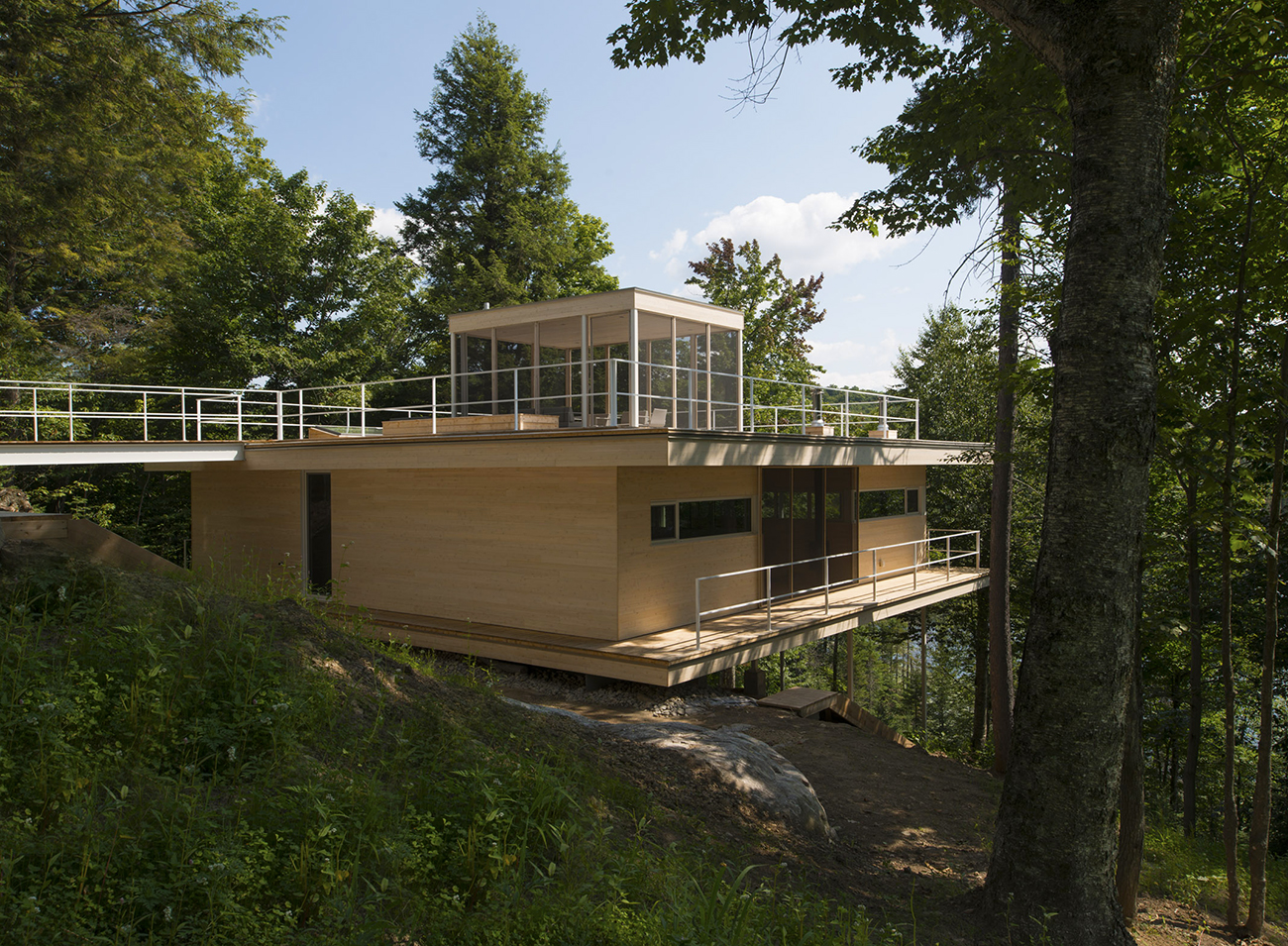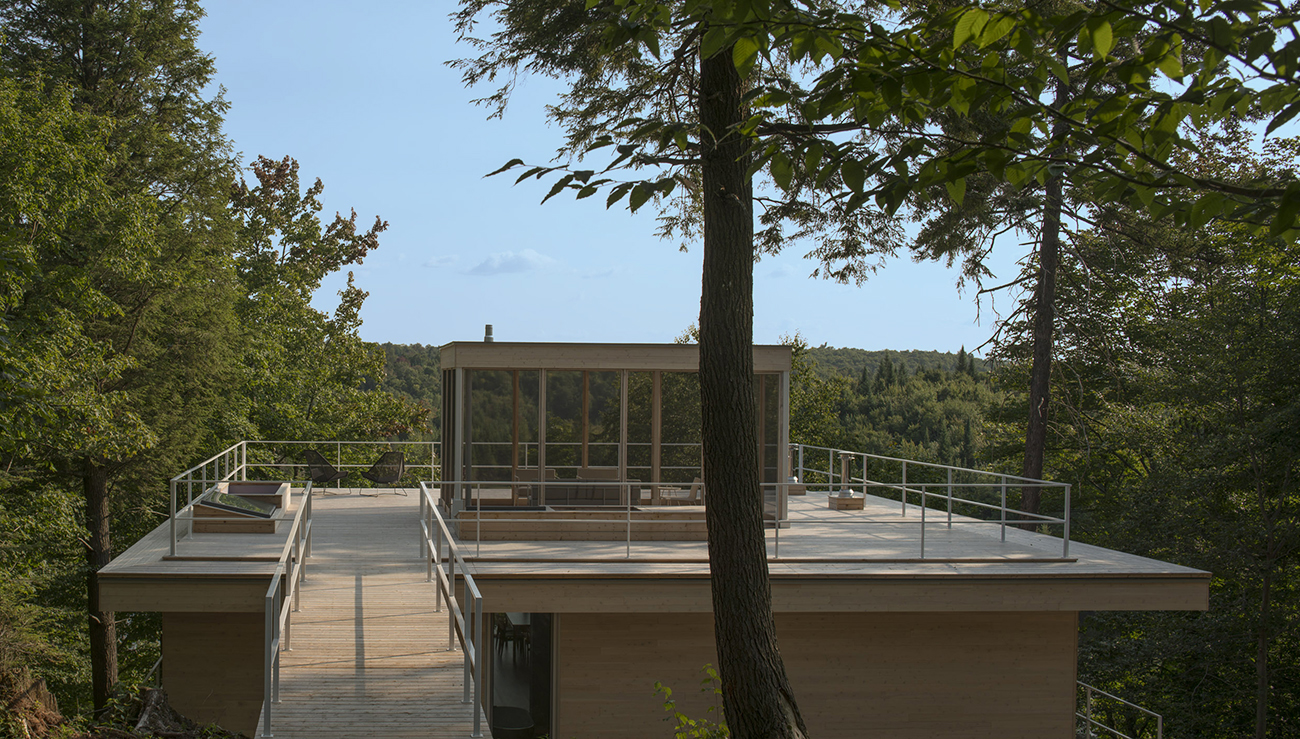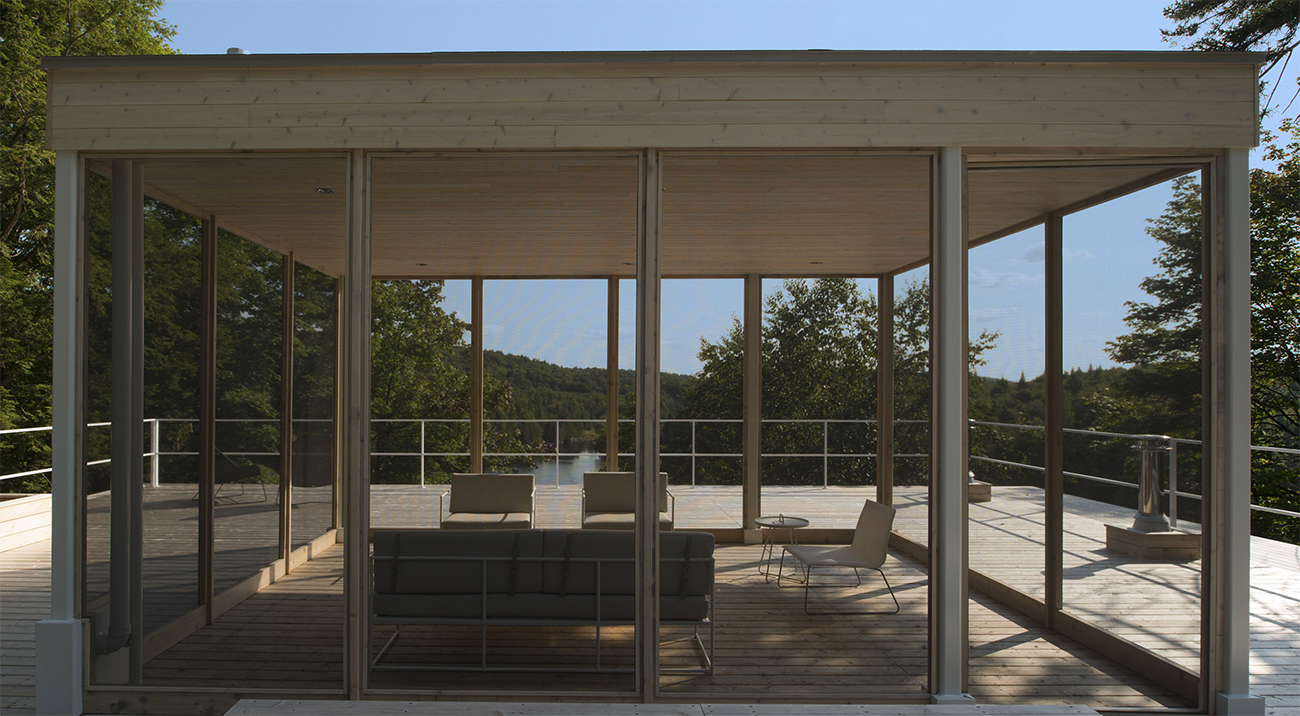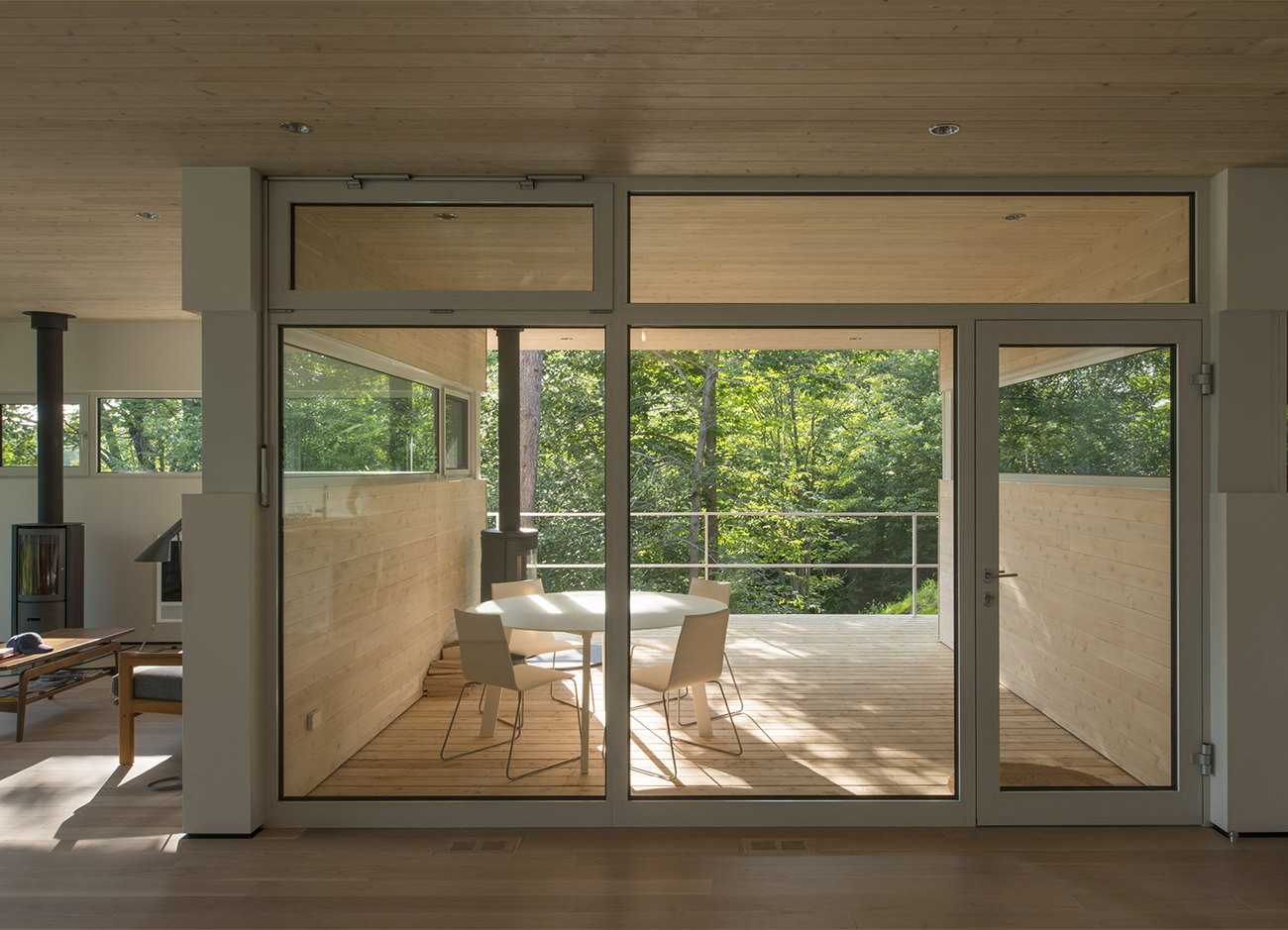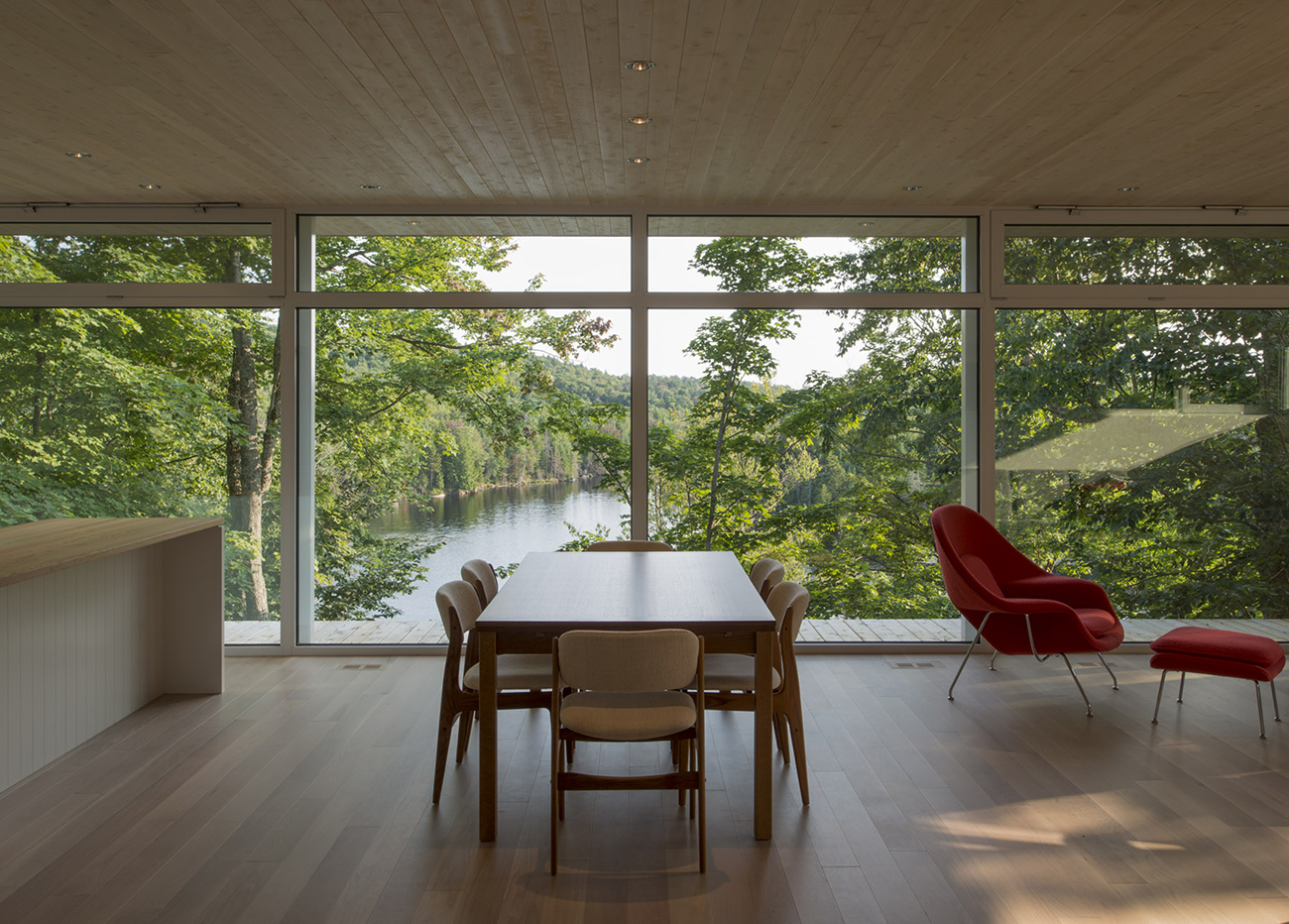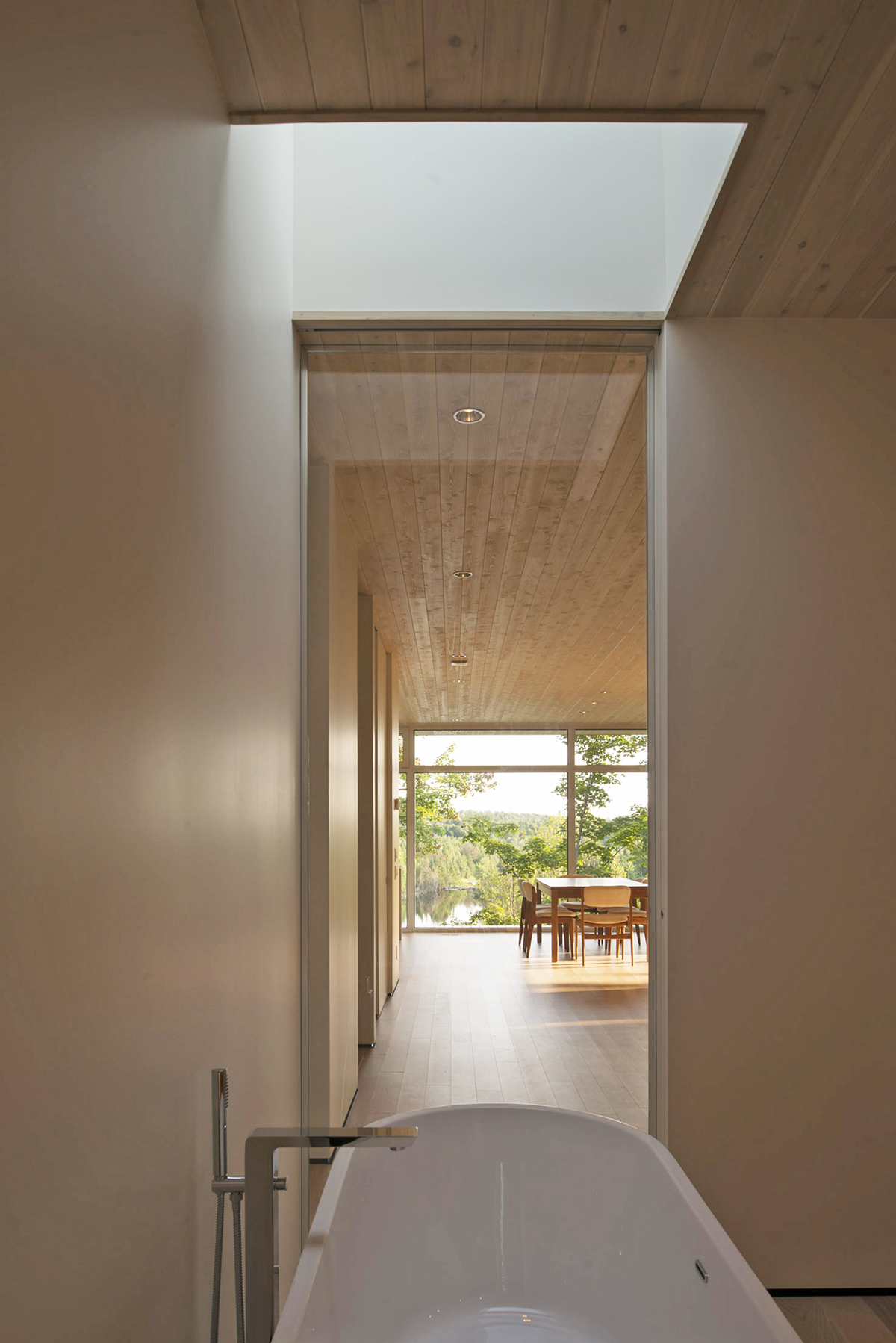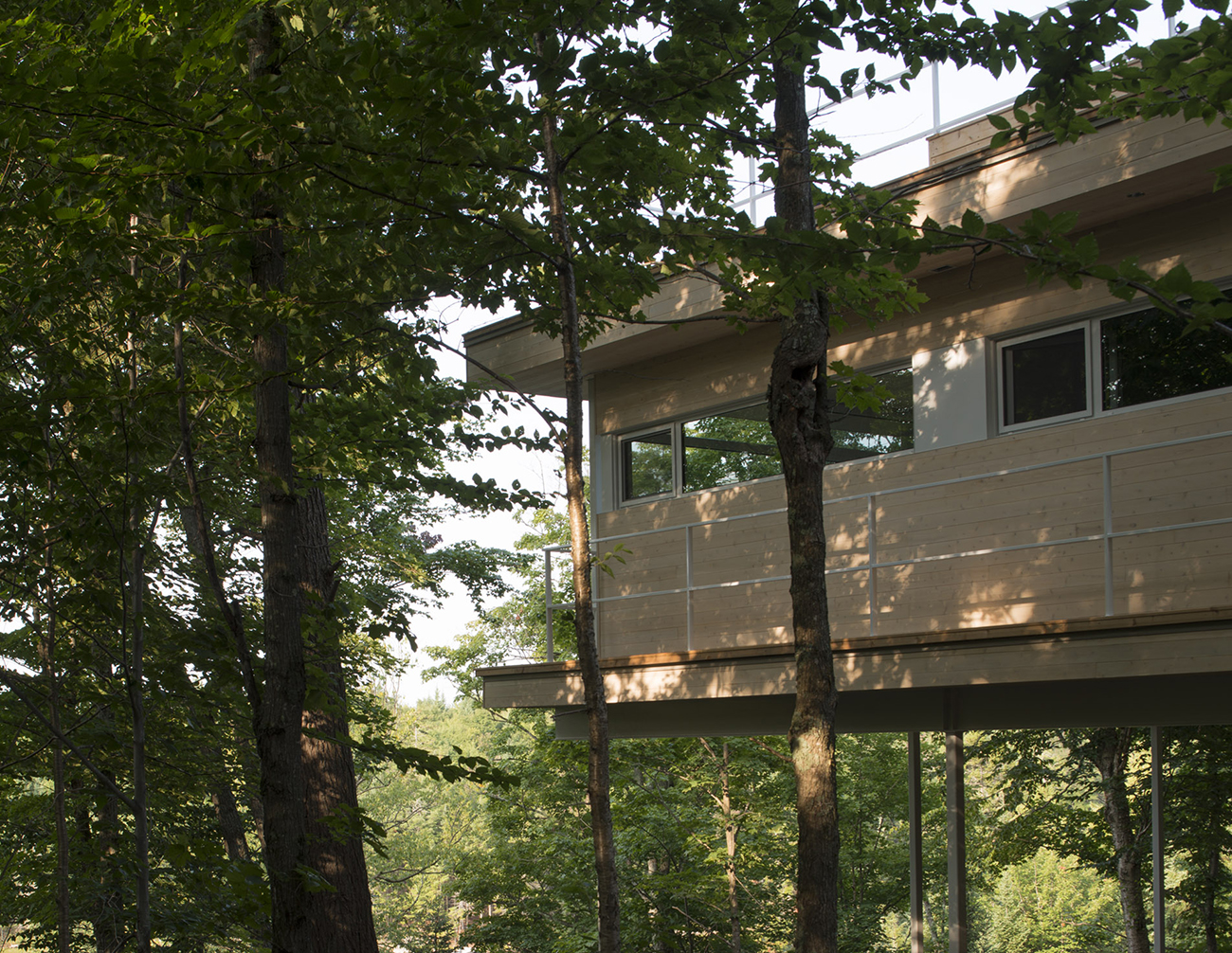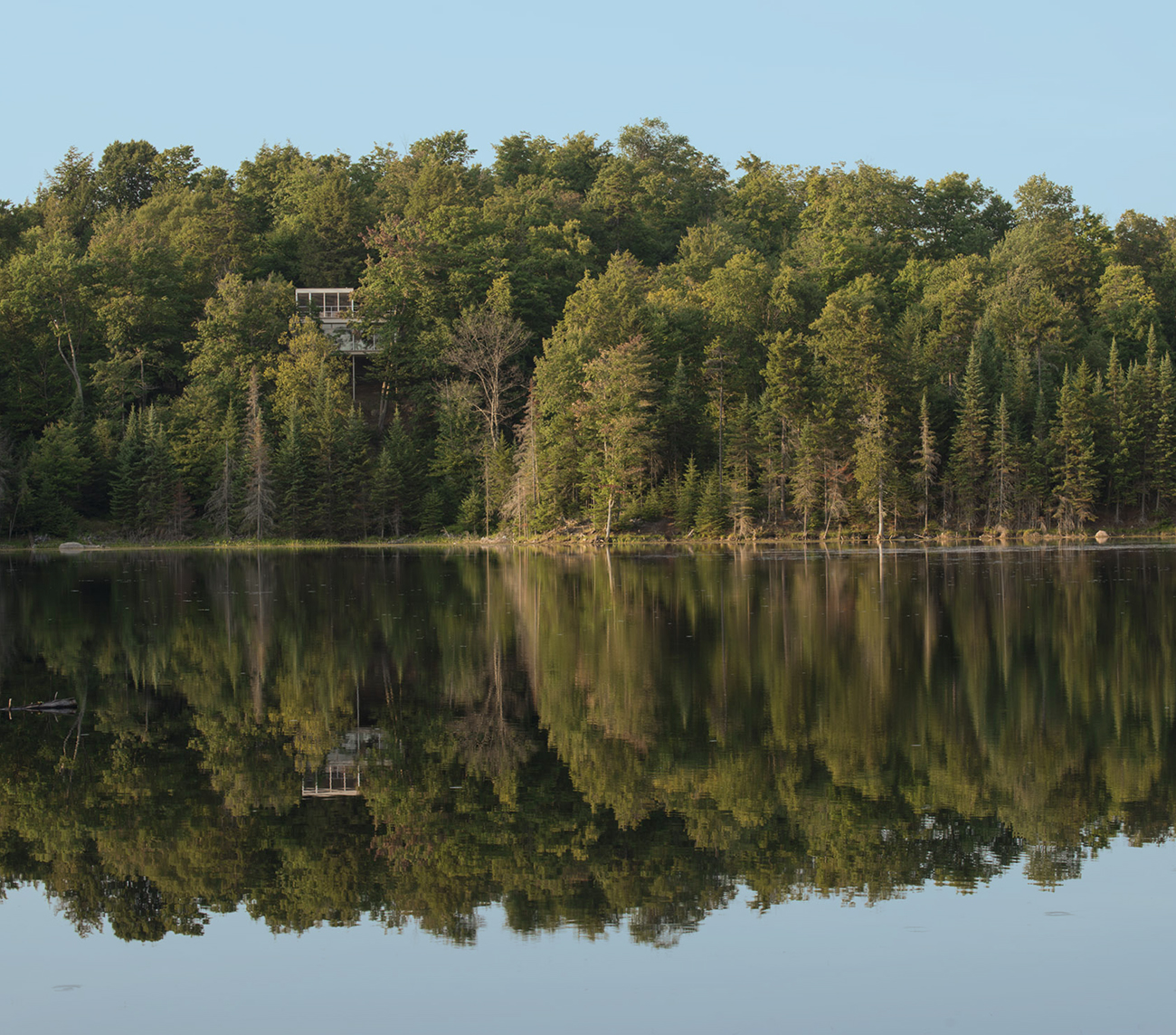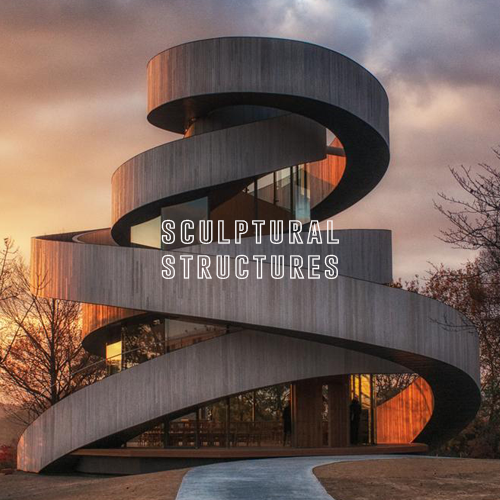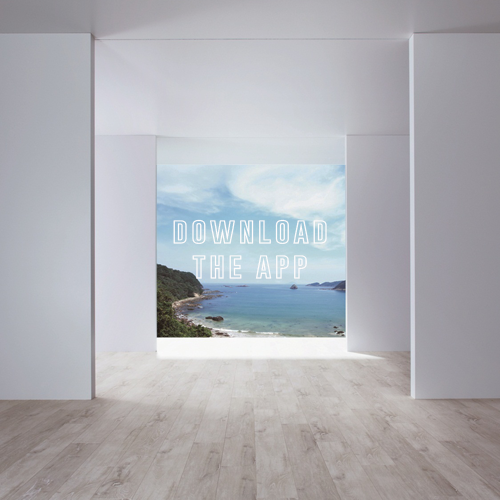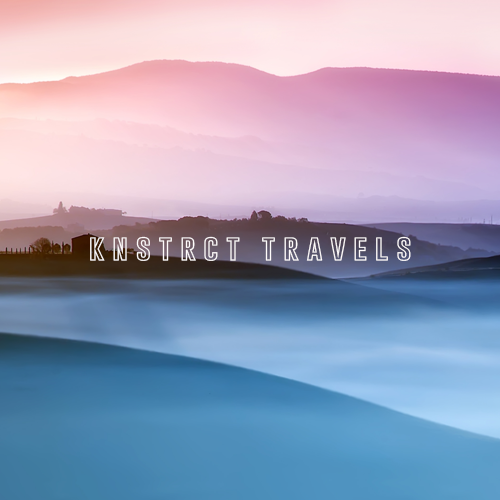Cabin Fever: Pierre Thibault’s Canadian Cabin Floats Above a Breathtaking View
/Pierre Thibault discovered a thriving, immensely gorgeous ecosystem when he first visited Lake Heron, Canada, as well as a perfect promontory upon which it could all be taken in with a joyful pacifism befitting the scenery. That site would become the location of Le Grand Plateau, a multi-storied dwelling place, contracted as a year-round retreat for a retired couple, that sits atop that original outcropping. Leveled, boxed, stilted, and accessible via a bridge, Le Grand Plateau is a modern perch that gazes out upon “a forest inflamed by Fall” with the lake beneath and “the silhouette of the mountains [looming] in the distance.”
Approaching the entrance of the house puts visitors at eye level with a rooftop room that really sets the tone for Le Grand Plateau: it is a boxed bungalow with a wraparound deck that is simultaneously the “roof” of the main house (lying below). This rooftop studio is walled entirely in glass and affords views of the magnificent scenery, from within the room itself--which is outfitted with sofa, chairs, and coffee table and accommodates 360 degree viewing--as well as through the room to the mountains in the background, in which case the room becomes a modern accessory placed in the perspective of the sublimity of the natural Canadian scenery. A stairway is cut into the side of the deck, right next to a skylight that reaches the interior below. These effects communicate the reality of standing on a roof while the non-traditional comforts of doing so are found in the walled cabin, which is a nice foray into this dynamic dwelling place.
Windows are of course an abundant feature of Le Grand Plateau and since the house is leveled, each glass wall features a different view of the surrounding forest. This is provided for by a specific architectural strategy whereby the house is “placed on very thin columns to give the impression that the inhabited space floats, almost as if in levitation.” Therefore the various views from the levitating space serve to “frame” the trees by way of the upward extremity of the roof/deck and lower extremity of the main floor deck. Table and chairs placed in front of these views illustrate their serenity; their ability to hold the sensations captive for extended periods of time. The wood melds nicely with the glass by virtue of its very versatile bright color, which allows for a hint of freshly forested and cut trees, thus conveying the idea that despite the glamor obviously intended by the architects, Le Grand Plateau still holds all the charm of a cabin in the woods; and communicates the homely and inviting, which is of course crucial for the mid-story dwelling areas.
Although the cabin-esque vibe is alive and thriving, the interior is far more elaborate, accommodating three bedrooms, two bathrooms, a kitchen with an island, and full living and dining areas. The interior is reached via the terrace upon which sits that table and those chairs that look out upon the serenity of the trees, and the front entrance is appropriately a double glassed door. To the left of entrance (hillside) are two of three bedrooms, the third across from the entrance, while to the right the kitchen, living, and dining rooms are lined up adjacent to the spectacular mountain scenery, creating “a perfect combination between nature and architecture” by which the clients could take in a panoramic view at all times. When the fact that these views are vastly different, and equally accommodated by the design, depending on the different seasons, the integration that Atelier Pierre Thibault had in mind as he went about the project is quite evident.
In structural and materialistic terms Le Grand Plateau is fairly minimal: despite the steel framework, the simple angles and surfaces create a delicate impression, while the “finesse of the structure, especially the thin columns that hold the house in place, seem almost surreal.” This surreality is vital to Thibault’s method as it allows the building an exclusive functionality that never intrudes upon the environment with any kind of overtly modern grandeur, instead holding fast to a distinct country charm. As he and his clients intended, it appears to have floated leisurely over the Canadian wilderness and alighted atop this promontory, finding it as a good a place as any to rest in contemplative fascination of “the scenery of immense beauty.”
